Sumeria was "The Land of the civilized Lords" in the south of ancient Mesopotamia, in the region of modern day Iraq, between the Euphrates and the Tigris Rivers, and was the centre of all activity, technology and religion. It was made up of several city-states that formed themselves into a comprhensive group in the Uruk period, during the 4th millenium BC. Each was centered on a temple dedicated to the particular patron god or goddess of the city and ruled over by a priestly governor (ensi) or a King (lugal), who was intimately tied to the city's religious rites. The cities also took their names from their patron god/goddess.
There is evidence that there were people in that region who were very civilized and organized and practiced extensive year-round agriculture. The name of the Uruk period was taken from one of the City states that made up the Sumer. Because they had such a long and organized culture of farming, they were able to form huge cites, store large quantities of food and employ a huge labour force, which made the region very prosperous. The Sumerians also boast one of the earliest cuneiform scripts, which is the earliest known type of expressive writing. They created symbols that stood for letters and words, and strung them together in lines on clay tables. This is how we come to know more about them than other, sometimes even younger, civilizations: because they wrote everything down.
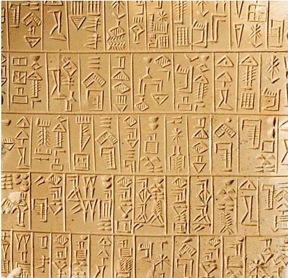 This is a Sumerian Tablet, showing the cuneiform for which the civilization is known. The Sumerian cuneiform is the oldest example of writing on earth.
This is a Sumerian Tablet, showing the cuneiform for which the civilization is known. The Sumerian cuneiform is the oldest example of writing on earth.They were one of the first peoples to use the wheel, to build magnificent walls, towers and temples. They employed elaborate irrigation techniques. They were some of the first astronomers, mapping the stars into sets of constellations, many of which survived in the zodiac and were also recognized by the ancient Greeks centuries later. They were pioneer mathematicians and inventors. They created fine painted pottery and jewellery of gold, copper, silver, lapis lazuli and carnelian. Sumerian women wore makeup, gold necklaces, and decorated their hair with various types of headdresses. Music was an important, intrinsic part of religious and civic life, and Sumer had many accomplished musicians and advanced musical instruments. Sumerian society was a patriarchal one, which is very important to understand. For a male-dominated society to hold a Goddess in such high esteem is no small thing. For even though they were male-dominated, they reckoned time by the moon. Sumerian mythology has since been assimlated into many cultures, including Egyptian, Judaic and even Celtic myth.
The Seven who Decreed Fate are accepted to be the Core Gods and Goddesses of Sumerian religion. It was around these Seven that the first city-states were formed. They were later seen as belonging to the same council of deities, and even when Sumer became swallowed up by Akkadia, these Seven remained largely unchanged but for slight modifications in their names.
The first of the Seven we will look at is Inanna. She is my Matron Deity.
For a little while now, Inanna has been calling to me. Yemaja will always be my Mama, and without jealousy she allows Inanna to be at the forefront of my mind and to tug at my heart. And it is without fear that I follow her: she unfolds my soul, sprouts my wings, challenges my heart and burns in my veins. Years ago, when I chose the name "Lilitu" as part of my Magickal name, I knew that it was an early form of Lillith, Goddess of Night, the first wife of Adam, the demon of Galilee, the sexually independent woman who both instills fear and commands respect. I found out much alter that Lillith is the announcer of Inanna, the embodiment of Inanna's sexuality. She is the Goddess of the Dark Moon, therefore also embodying Inanna's transformation. I am now doubly proud to have chosen this name.
In a very masculine society, Inanna was the extremely powerful, revered Goddess of Sexual Love, Fertility, Infinite Plenty, Sexuality and War. She is the eight or sixteen-point evening star. She is the Transformatrix, the Dark Mother. She was duality incarnate, being so very feminine, the Queen of Heaven, and yet possessing such strong Male energy, commanding the battlefield. She is the Goddess of grain, composer of songs, healer and Lady of Myriad Offices. She is fiery, erotic, passionate, both chaotic and ordered, eternally youthful but wise. She is the embodiment of the Divine Feminine., eventualy known as Ishtar, Isis, Metis, Astarte, Neith, Breid and Cybele among others. Of all the ancient deities, Inanna has be the most reborn, reincarnated, assimilated goddess.
She is terrible and beautiful, fearsome and awesome. She is never frightening, only compelling. She is not gentle spirited, but she is not unkind to her priestesses and devotees. She has no time for pleasantries and games, she is straightforward and blunt. She is both the raging flood and the gentle rain. She grasps both breasts, offering them to the man that would dare call her Lover. She is strong and independent and reserves the right to choose her partners. She is seductive and irresistible, she is wanton and wild, sometimes unpredictable.
She is the keeper of the mes, the giver of culture, of the knowledge and mastery of art, maths, architecture, and all other mental and manual creation and skill. She challenged Enki, the god of culture, who jealously kept guard over the mes - tablets that contained the blueprints to everything that could possibly make up a culture, including Kingship, craft, science, speech, lovemaking, song, art, priesthood, truth, writing, and more. The mes grant the existence of and power over all aspects of civiliazation. Inanna tricked Enki and stole hundreds of the mes, thus shifting the strength of the civiliaztion from Eridu, Enki's territory, to Uruk, her own. Inanna later escaped attacks by sea monsters sent by Enki, and retain possesion of the mes that made her people and their culture so powerful. By doing this, Innana took her place as a Goddess of wisdom and fearlessness.
Her Love is not the gentle, romantic kind, Hers is the Love that will lay you bare, strip you naked, force you to surrender. Inanna does not call softly. It is not a sweet love, rather it is passionate, fiery and all consuming; the Love that sends men into battle and that fells kingdoms. she will destory those who stand in her way with her Love.
Later to the Akkadians and the Babylonians she became Ishtar and then Astarte, and she was softened to embrace romantic, sweet, gentle love. But that love is of Ishtar and Astarte, not the Love of Inanna. Hers was real, pragmatic, strong, all-encompassing and vivid, and all the more rewarding for being so strongly real.
Inanna is the keeper of Sexual Love, sensuality, pleasure and fulfillment - all the things that were considered an integral part of a successful, prosperous union. Inanna lives in the moment of pleasure, and in the moment of conception. She rewards faithful lovers with all the passion found on a battle field poured into sexual frenzy. She inspires us to be confident in our sensual and sexual desires, to be unapologetic.
She is Lust which consumes partners, and the fertility that results from the consummation of that Lust. She is the Goddess of Infinite Plenty and Bounty. Her priestesses were teachers of the secrets of sex and conception. All Fertility was a gift from Inanna, whose sensuousness drove others to be fruitful. So many years ago the land of Mesopotamia was not a barren desert as it is today, rather it was lush and exotic, overflowing with plant and animal life. The sumerians were expert farmers, and so looked to Inanna for the success of their crops.
Inanna is the strong and indomitable Mistress of War. Battle is the Dance of Inanna. Her breastplate is a beacon for her warriors to follow, or else her naked winged body, free of all fetters, chains and disguises, is an inspiring sight. She gives the gift of weapons and strategy, she guides the hands of her soldiers. She speeds conflict in battle, heating the blood of her warriors and cause chaos and confusion against those who are disobedient and against her enemies.
She wields her sword with deadly precision, riding upon the backs of her winged Lionesses. The Evening Star is her Mark upon the sky.
Inanna is also associated with the Planet Venus. The Sumerians were master astrologers and understood that Venus is irregular in her movement, and can disappear behind the Sun for 3 to 90 days at a time, it is erratic and dualistic, like Inanna. But there is always more to it than just what you can see on the surface. The disappearance of Venus directly relates to the most important of Inanna's myths: That of her Descent into the Underworld.
One day in summer, Inanna decides for reason unclear to visit the Underworld, and she dresses herself richly in garments that represented her control over the mes - a turban, a wig, a lapis lazuli necklace, beads on her breast, the pala dress, mascara, pectoral a golden ring and a lapis lazuli measuring rod - and sets off for the Gates of the Underworld. Before she leaves, she instructs her servant Ninshubur to plead with the gods Enlil, Nanna and Enki to save her should anything go amiss.
Ereshkigal, Inanna's twin sister and Mistress of the Underworld, is also her greatest rival. bound by the Law, Ereshikigal cannot leave the Underworld to join the living gods. Inanna is representative of everything that Erishkigal is not and cannot have, and thus Ereshikgal hates her. Innana its held fast to the same Law that binds Ereishkigal herself - just as she cannot step outside of her realm, so no god may visit the Underworld. If any god crosses into another realm, that god may never return from it. Ereshikgal is enraged at Innana's audactiy and instructs the Keeper, Neti, to have her remove a piece of clothing at each Gate, and to have the Queen of Heaven enter the throne room "bowed low". Inanna hands over her measuring rod to the Neti, saying that her reason for visiting is to attend the funeral of Ereshikgal's husband, who is in one version claimed to be Gudgal-ana, the Bull of Heaven killed by Gilgamesh, and in others is said to be the Plague god, Nergal.
As Innana descends further into the Underworld, she sheds more and more articles of clothing at each of the Seven Gates, and is told when she asks why to "be quiet...the ways of the Underworld are perfect. They may not be questioned."
Finally Inanna crouches before Ereshikigal, naked. Ereshkigal moves toward her twin sister, and Inanna moves behind her to claim the throne. However as Innana takes the throne, the Annunaki, Judges of Heaven and Earth who must uphold the Law, pass harsh judgment on her, screaming and howling at her. She shrivels into a dried corpse, a rotting piece of flesh, and she is hung, still naked, on a hook in the wall.
Ninshubur, empowered and trusted by Inanna, waits three days and nights and then, wailing and beating Innana's drum, approaches the gods. Enlil and Nanna are furious at Inanna and refuse to help, but Enki, deeply troubled, understands the nature of Inanna's journey, he understands the pain she shares with her sister. He fashions two figures, neither male nor female, out of the dirt under the his fingernails. He calls them the Kurgurra and Galatar, gives them the food and water of life, and instructs them to enter the Underworld like flies, visit Ereshkigal and ask for and receive only the corpse. They are warned that when they find Ereshikigal she will be moaning in pain like a woman in childbirth and that they are to moan with her, echoing her cries, but to accept no other gifts but Inanna's corpse.
Ereshkigal, appeased by their symathetic cries, offers the Kurgurra and Galatur her unique blessings, the water gifts, the River in its fullness, and the Grain gift, the fields of harvest, but each time, as instructed, they decline. They ask only for the corpse, which is the one gift that Ereshkigal wants to give but cannot offer. Finally Ereshkigal grants them the corpse, and they revive Inanna by sprinkling her with the food and water of life given them by Enki. As Inanna prepares to leave the Underworld, the Anunnaki seize her, stating that she must send a replacement for herself to the Underworld, and they send the demons of the Underworld, the galla, to cling to Inanna's sides until she finds a replacement.
When Inanna steps forth from the Gates of the Underworld, her faithful servant Ninshubur, dressed in rags, throws herself at her Queen's feet. The galla try to take her, but Inanna refuses to allow it, for Ninshubur has been supremely loyal. She also refuses to send her sons in her place, as they also mourned her death.
But Inanna's heartbreak is that her husband, the shepherd king Dumizid, instead of mourning her death, has dressed himself lavishly and openly lounges upon her throne, eating and drinking, and not acknowledging her return. She is enraged, and as punishment, she orders the galla to take Dumizid as her replacement to the Underworld. Dumizid's sister, Geshtinanna tries to rescue him, changing him into a snake, and then a gazelle, and even enduring the torture of the galla. When she is unsuccessful, she weeps from her belly, the anguish of a woman that Inanna understands only too well. Geshtinanna cries that she will share his fate, for he is her brother. Inanna, moved by Geshtinanna's self-sacrifice and loyalty even to the man who betrayed her, decrees that Dumizid and Geshtinanna will share their time in the Underworld, each going in turn to the Underworld for half the year. Inanna places them in the hands of the Eternal, therefore making them immortal, and thus neither will die as they come and go from the Underworld. Ninshubur is elevated to a priestess of Uruk. She remains loyal to Inanna eternally.
This myth shows Inanna's bravery, strength, and boldness, in facing the darker side of herself in her twin sister. It shows that she is not afraid to flaunt that he is the keeper of the mes, she strong willed and proud. It also demonstrates Inanna's loyalty to those that are loyal to her, her extreme wrath when betrayed, but also her compassion for courage and selflessness in the face of tragedy. Her death for three days is marked by the period of the Dark Moon, the Crone Time.
But it is more than that. This is the transformation of Inanna, Warrior, Heroine, Queen, Wife, Mother, into a Supreme Being through her own death. It is her spiritual initiation. She faced all that was dark in herself, represented by Ereshkigal: the lonely, anguished, unloving, unloved, sexually depraved, enraged, hateful, greedy place with potential life lies motionless, forever in the pangs of birth but never finally being born, the inertia of non-action and of bitterness. Inanna faced these things, endured Judgement, died, and emerged reborn and triumphant, relying on her Higher self (Ninshubur) and Divine Intervention, placing her trust both in her own strength and Self and also in that which is outside of herself. She calls upon us to do the same, to journey into the dark sides of ourselves, to face the death of our old mortal selves and embrace the pain that comes with it, for out of those ashes shall we arise new, clean spiritual beings.
This is my Mama Inanna, in all her magnificent, terrible, glorious beauty. She commands my love and loyalty, she challenges me to journey into the darkness and step out again, radiant and renewed. She guards me, empowers me, sets fire to my heart. Hail Inanna, the Evening Star, the Radiant Venus, Queen of Heaven!
Brightest Blessings,
Selene Lilitu

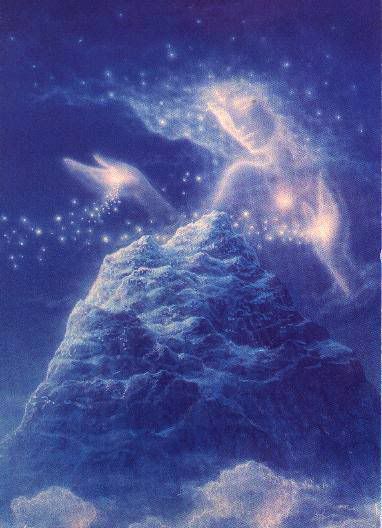

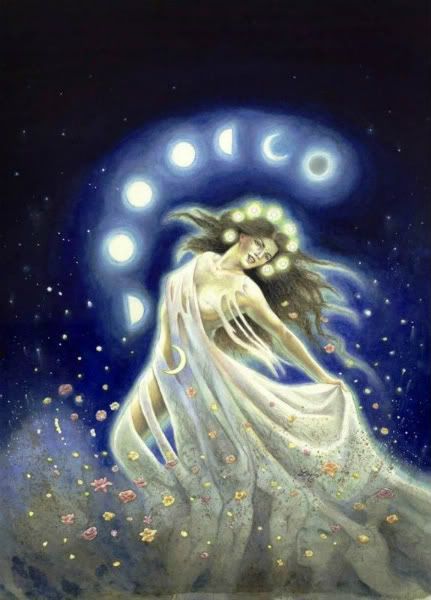


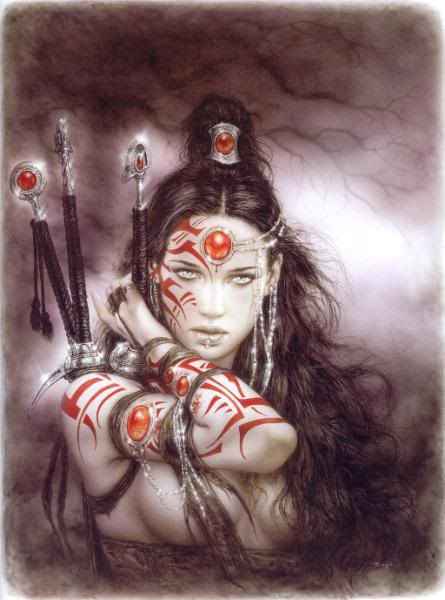
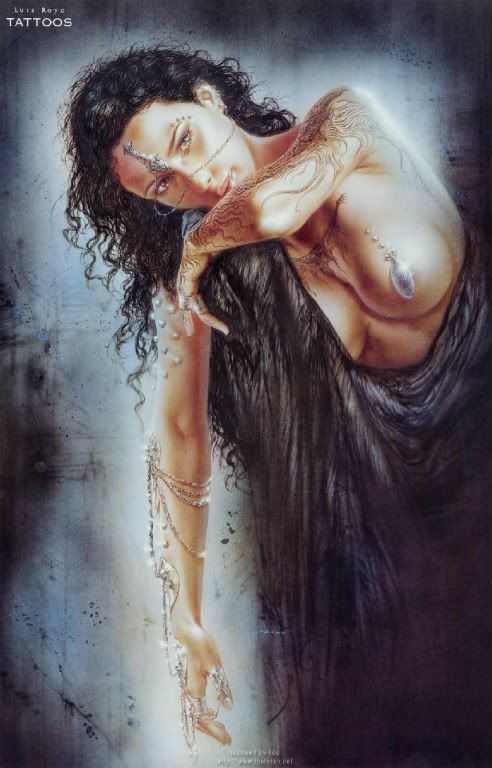
No comments:
Post a Comment
Note: Only a member of this blog may post a comment.